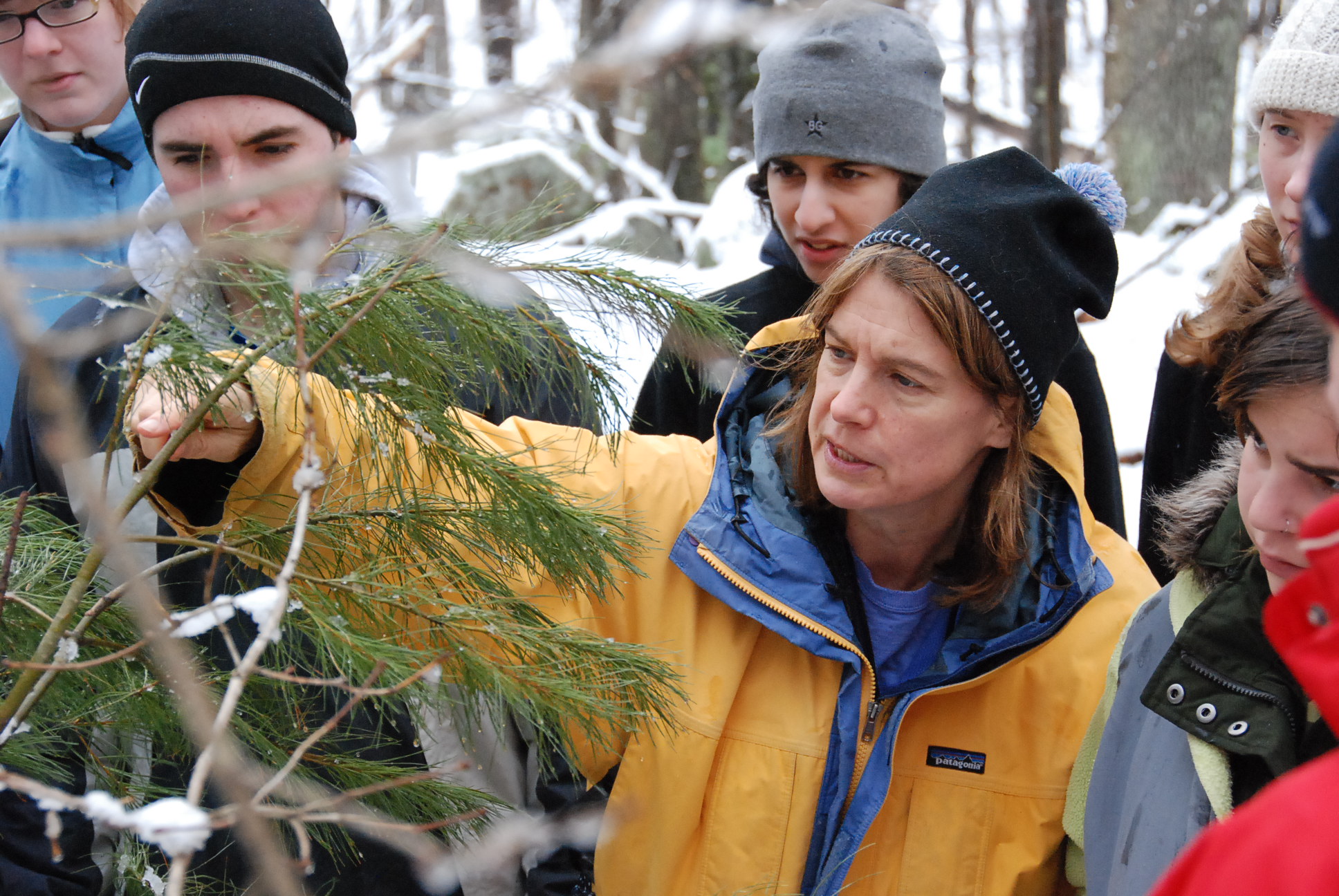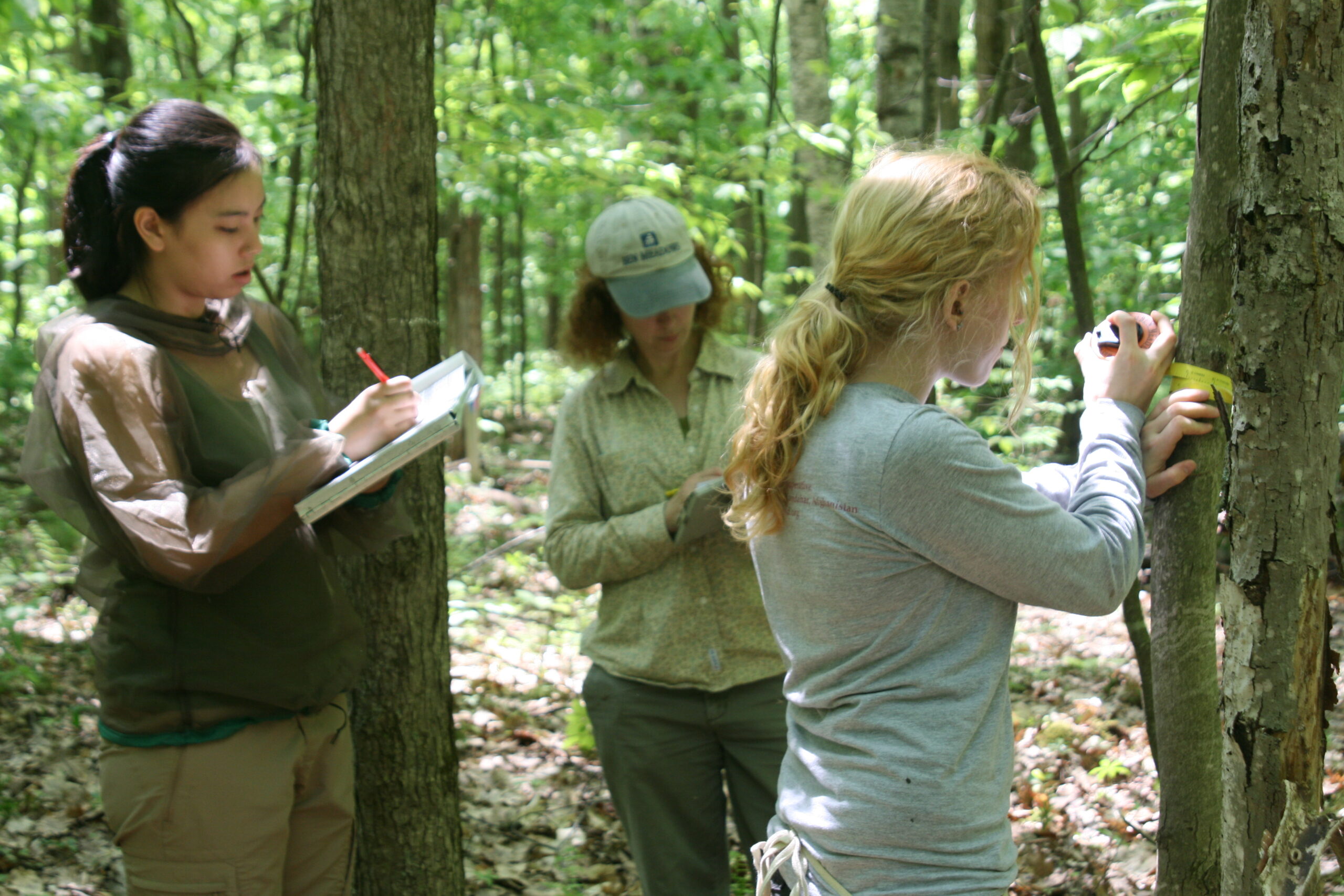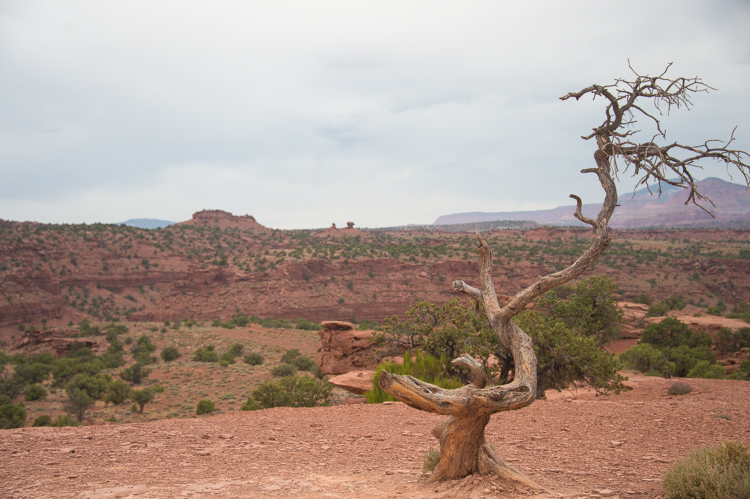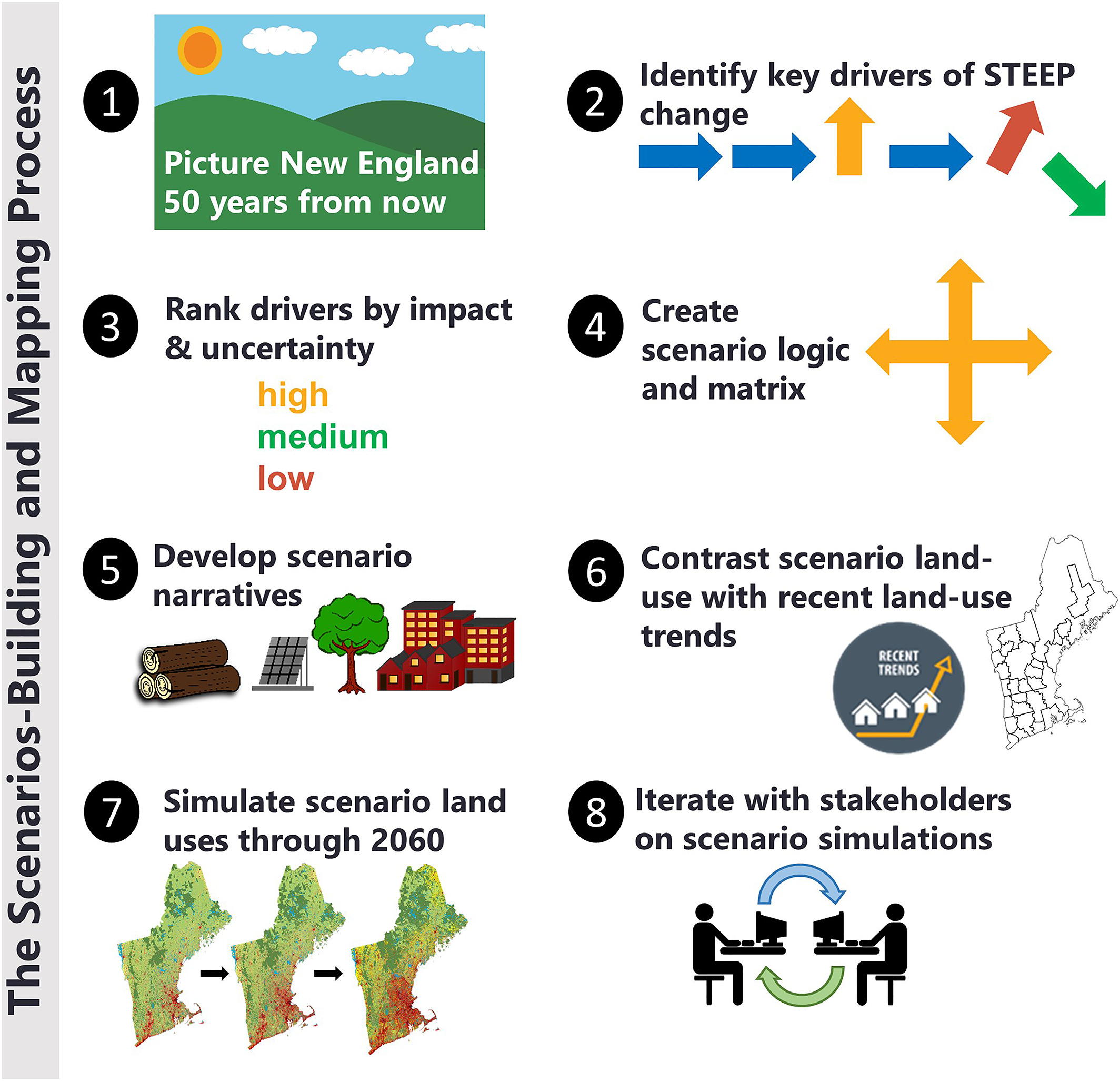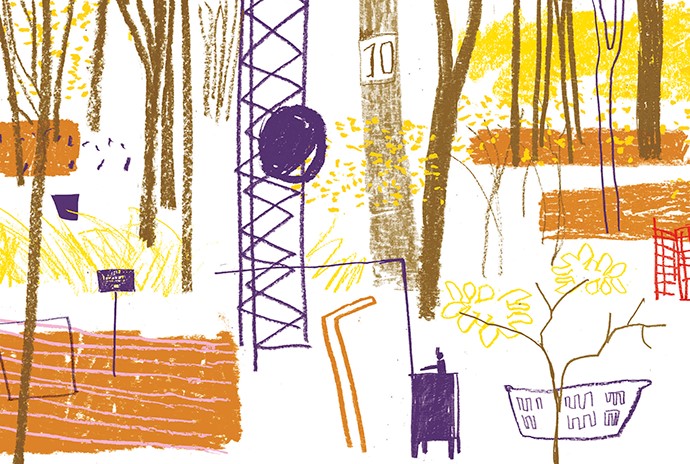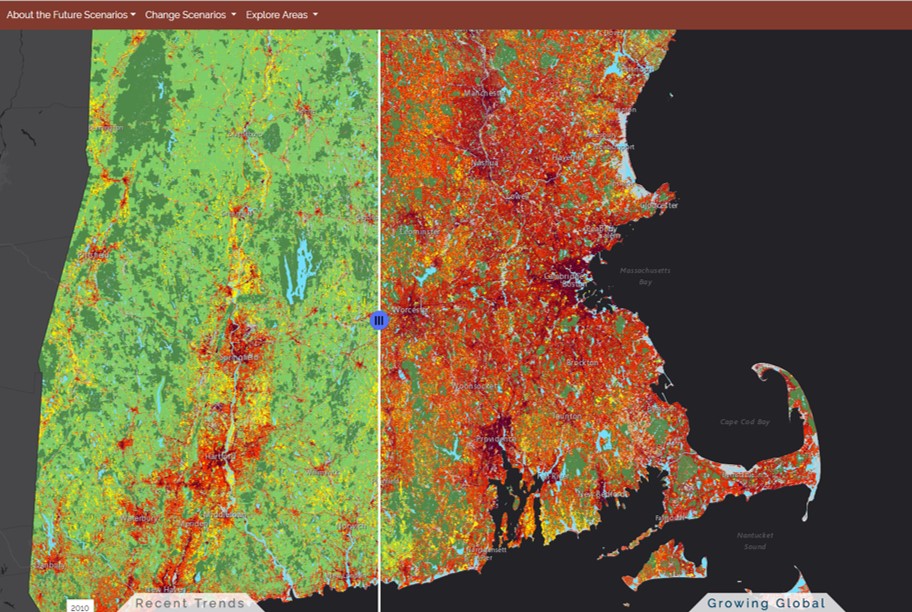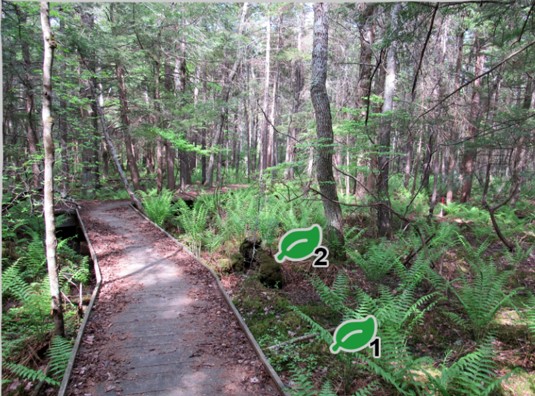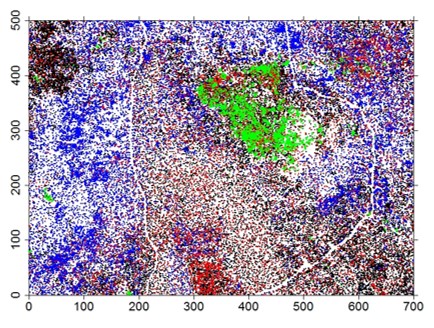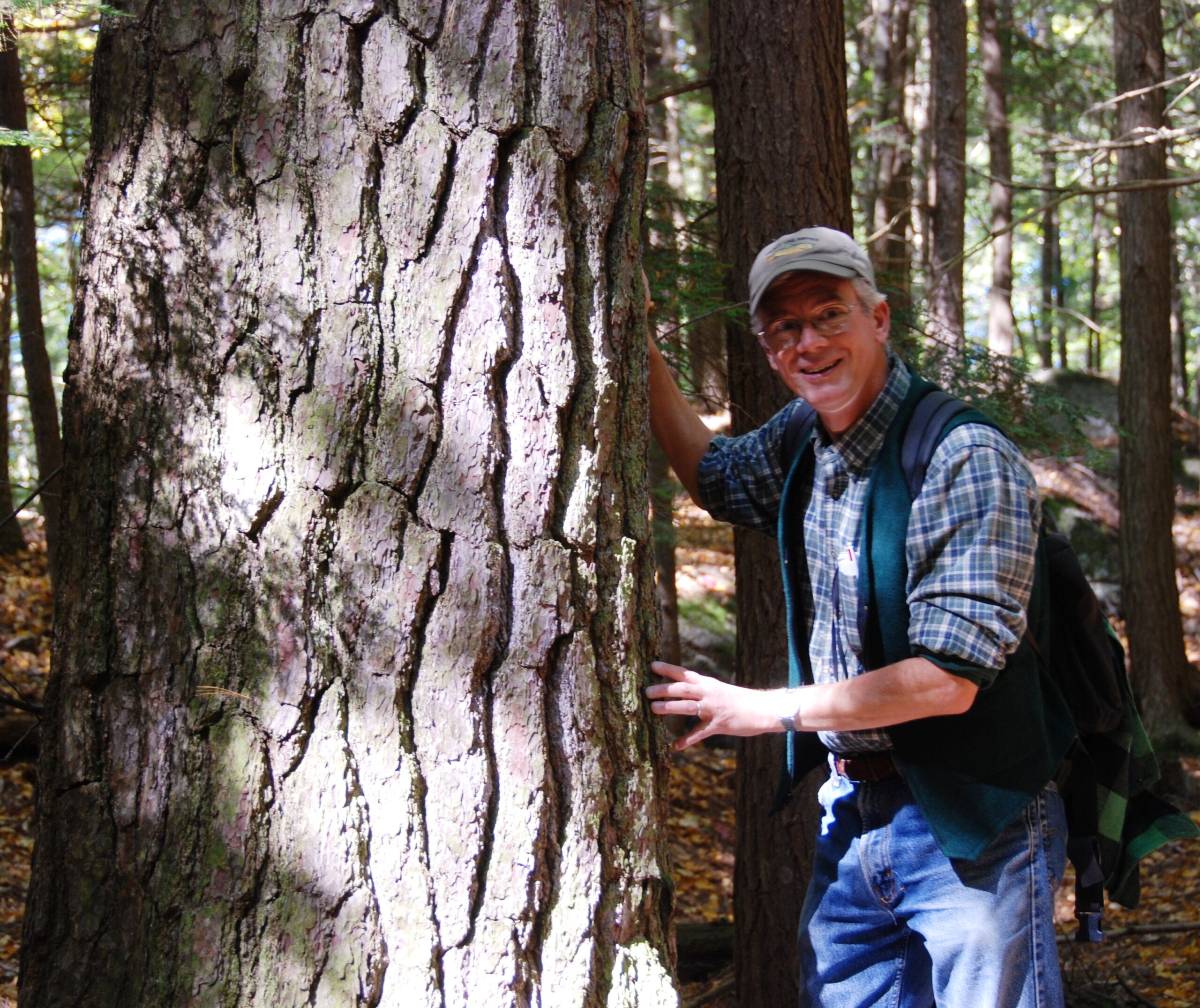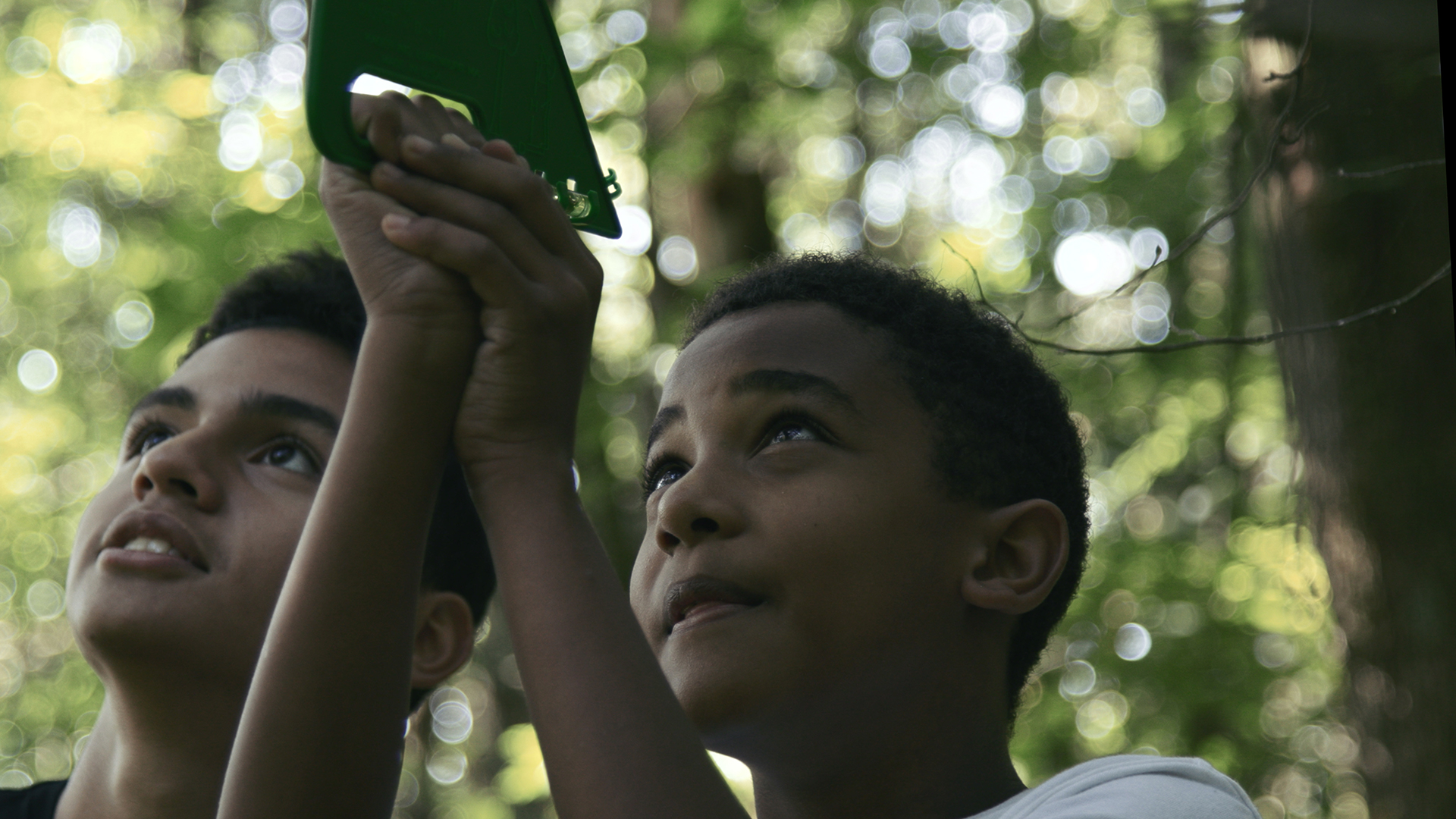Noel Michele Holbrook, an accomplished plant physiologist and the Charles Bullard Professor of Forestry at Harvard University, became the eighth director of the Harvard Forest on July 1, 2020. The role is an interim position, with a future search for a permanent director pending.
Retiring director David R. Foster has assumed a new position of Senior Conservationist at Harvard Forest and will remain as a senior lecturer in biology at Harvard, continuing a distinguished career in research and education that includes teaching Harvard’s longest-running Freshman Seminar course. Foster came to Harvard Forest as an ecologist and assistant professor in 1983, and right away began to teach and mentor Harvard students – an effort that has inspired hundreds of future scientists and conservation leaders, many of whom cite Foster’s courses and mentorship as foundational to their careers.
During his time as director, Foster significantly elevated the scope and impact of Harvard Forest research. In 1988, he worked collaboratively with leading scientists across the region to establish the Forest as one of the nation’s first Long-Term Ecological Research (LTER) sites – a highly competitive National Science Foundation (NSF) program that has supported decadal-scale climate and global change studies at the Forest through more than $20 million in grants over the past 30 years. In 2010, Foster oversaw the establishment of the Forest as the Northeast core site for the National Ecological Observatory Network, another major NSF program, as well as the largest North American study site for the Smithsonian’s Global Earth Observatory.
Jonathan Thompson, who succeeded Foster in 2019 as the principle investigator of the Forest’s LTER program, notes that the breadth, real-world impact, and highly collaborative nature of Harvard Forest’s current research programs are in large part a reflection of Foster’s vision. “David’s leadership has brought together world-class scientists who collaborate to understand not only how the forest functions, from microbial processes to landscape-scale change, but also how human decisions drive those changes. David has built lasting bridges with policymakers and professionals across sectors, so the science stays relevant and is regularly put to use on the ground.”
A centerpiece of Foster’s legacy is the Wildlands and Woodlands initiative, which was launched in 2005 as a science-driven vision for the protection and sustainable management of Massachusetts forests. The initiative has grown to encompass the New England region and beyond, with hundreds of organizations, agencies, and colleges and universities working together to advance a regional conservation, science, and policy platform for sustaining forests, farmlands, and communities.
During his tenure, Foster oversaw the expansion of the Forest’s land base by 25 percent to 4,000 acres, a strategic effort to provide a buffer for some of the world’s longest-running forest climate experiments, and to sustain active cattle pastures as ecologically rare open-land habitat. Today, due to Foster’s collaborative work with local land trusts, the Commonwealth of Massachusetts, and Harvard University, more than a third of the Forest’s property is permanently protected from development—and all the land is governed by a long-term master plan that demarcates harvestable stands, wildlands, and land for use in experiments.
“David’s vision for protecting the Forest’s land has provided a model for academia,” says Clarisse Hart, the Forest’s Director of Outreach and Education. “The sale of development rights has protected the land forever and has also created an endowment fund to support future education and research.”
Foster has published dozens of influential books, research reports, and scientific articles on the history, ecology, and conservation of New England. While pursuing this work, he has also led the expansion of the Harvard Forest Archives, acquiring and increasingly digitizing centuries of maps, photography and correspondence; original Harvard Forest research data and notes; and historical forestry, soil, vegetation, and census records.
Holbrook, the Forest’s first female director, will add a new chapter to the Forest’s legacy of high-impact, integrative science and education.
After earning her bachelor’s degree in biology from Harvard, master’s degree in botany from the University of Florida, and Ph.D. from Stanford University, Holbrook returned to Harvard as a faculty member in 1995. Her internationally known plant physiology laboratory is devoted to better understanding the role of plants in water and carbon cycles, with a focus on how individual plants transport water and nutrients, especially in times of drought. Through dozens of publications in top journals, the scientists and students of the Holbrook lab have transformed scientific understanding of water dynamics in a range of plants, from soybeans to vines to oak trees – with many of their field studies based at the Harvard Forest.
Holbrook’s history with the Forest spans more than four decades. As a Harvard College freshman in 1979, she was a student in the Harvard Forest freshman seminar – which remains a popular course today – and during her senior year she worked with Martin Zimmerman, then director of Harvard Forest, to study water transport in the native grape vines that grow throughout the Forest’s property.
Today, Holbrook teaches Harvard courses in plant biology, global food systems, and plant physiology, and also heads the university’s undergraduate program in Environmental Science and Public Policy. For decades, she has brought students out to the Forest for hands-on learning in the field.
“One of the great things about field trips to Harvard Forest,” says Holbrook, “is the time we spend outdoors learning about how trees grow and how forests change over time. It’s fun watching students start to imagine life as a tree. Equally important is the chance to show students the full range of important research that takes place at the Harvard Forest and to explain why understanding forests matters for our collective futures.”
In addition to her university teaching, for which she has won awards at both Harvard and Stanford, Holbrook regularly contributes to outreach programs and life science curriculum for K-12 teachers and students. She also serves on the Executive Committee of Harvard’s David Rockefeller Center for Latin American Studies.
Holbrook says that as a long-time member of the Harvard Forest community, she is thrilled to be officially joining its ranks as director. She adds, “I am committed to doing everything I can to make sure that the Forest’s contributions and impact are sustained and even increase in its second century.”
